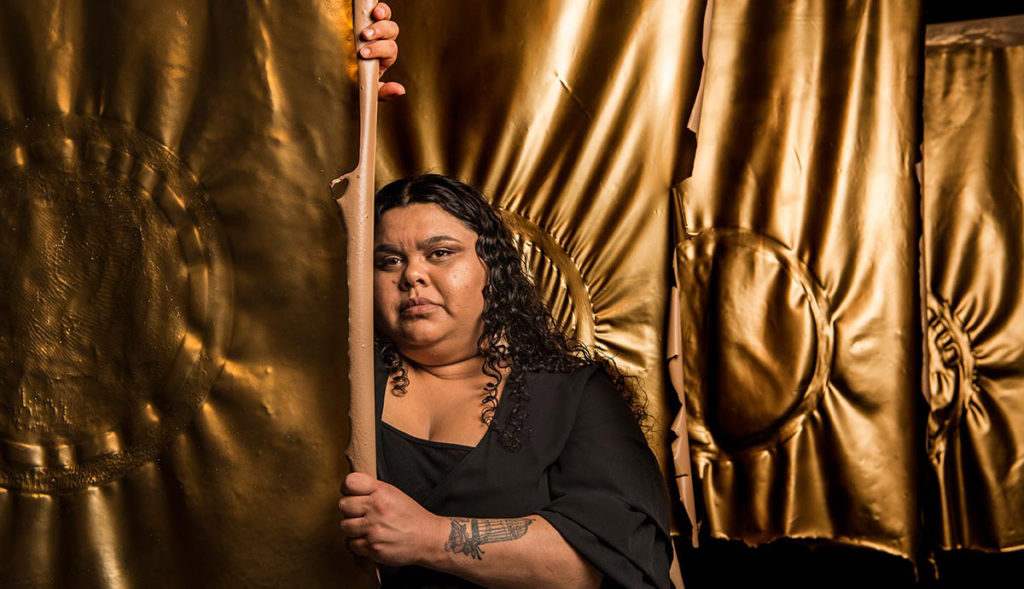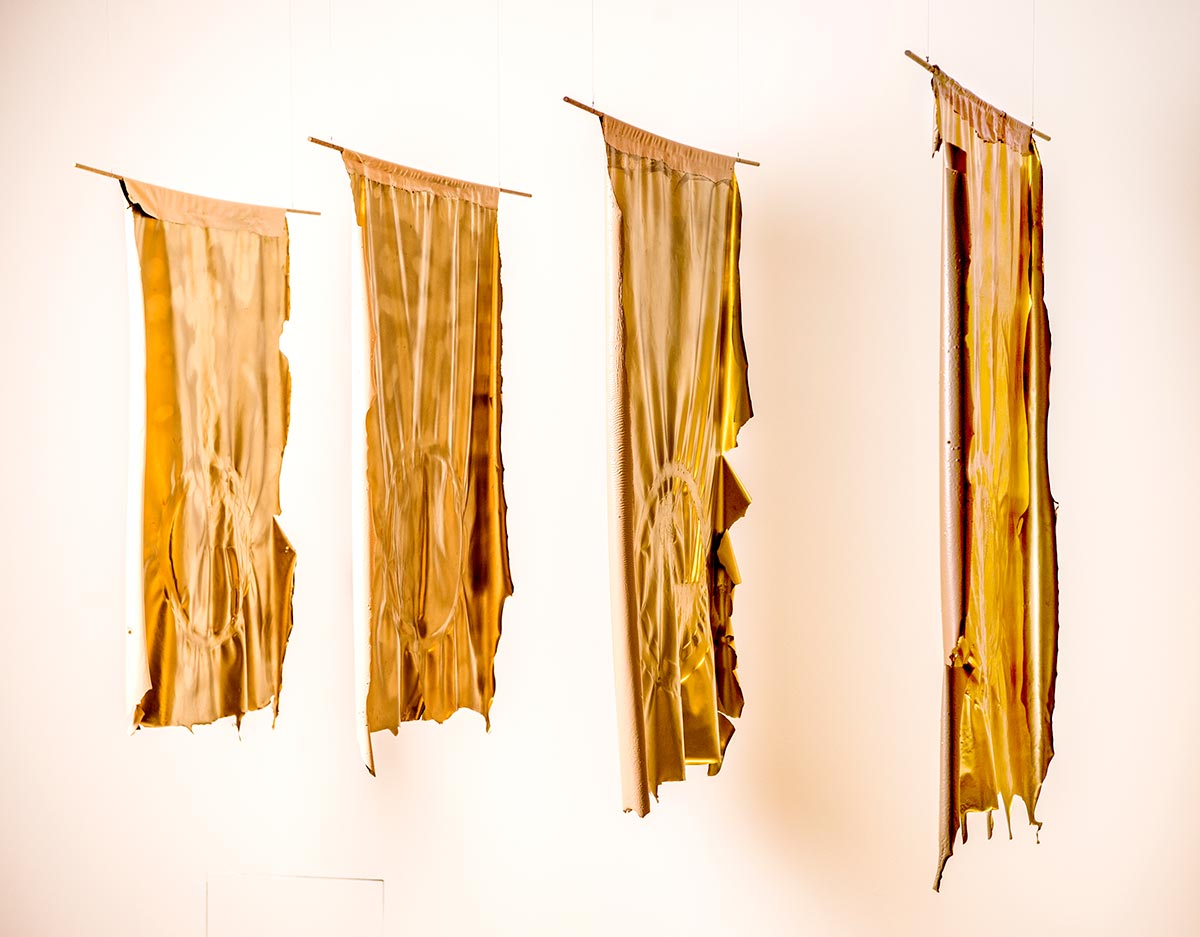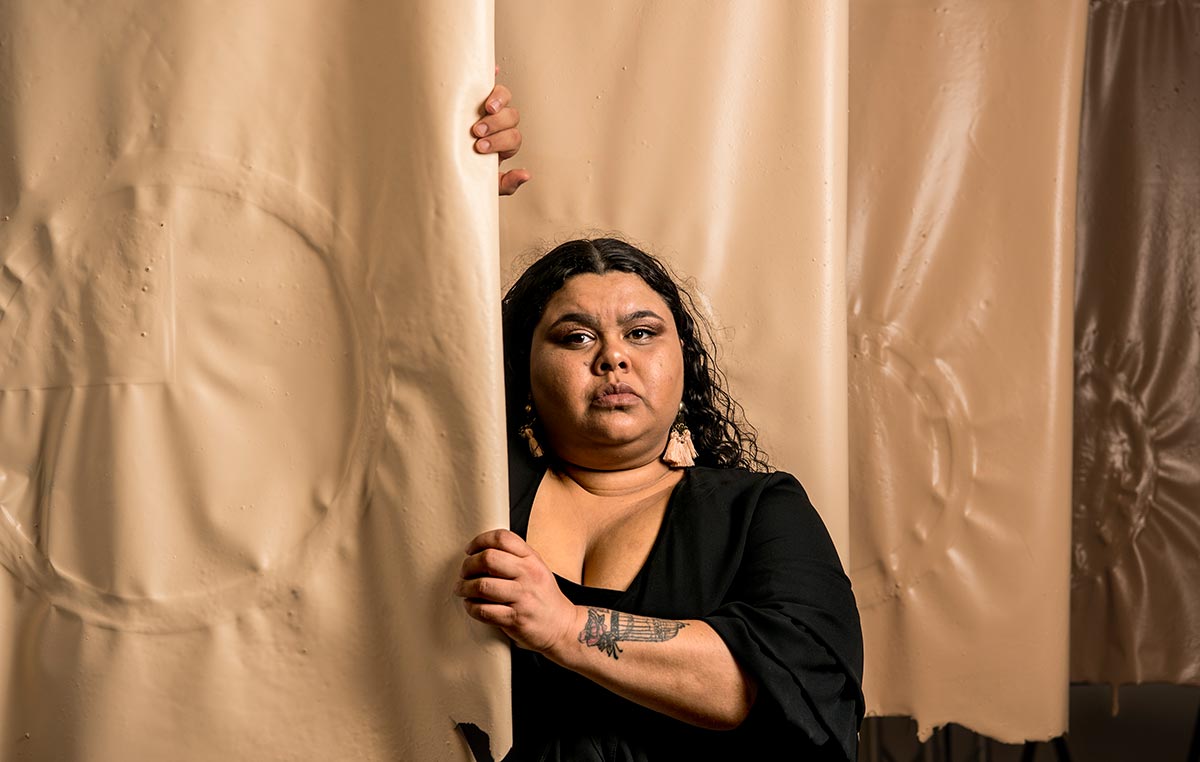The TWT Excellence Prize is here once again
We sit down with the winner, Sydney-based artist Carmen Glynn-Braun, to talk art, family, empowerment and the politics of skin
This month, Indigenous artist Carmen Glynn-Braun was awarded the 2018 TWT Excellence Prize – giving her a $5,000 bursary to develop her practise. The winning work, Untitled 2018, explores Australia’s traumatic 1951-62 Assimilation Policy, designed to obliterate Indigenous bloodlines entirely by removing children from their families and ultimately “breeding out” skin colour over generations.
Here, TWT talks to the artist about her work.
How does it feel to win the TWT Excellence Prize?
I’m really happy that people are taking on board Indigenous stories. I’ve had nothing but positive feedback and it’s heavy content. It’s not easy stuff.
The winning work, Untitled 2018, now showing at the UNSW Galleries’ ANNUAL 18 exhibition, is made up of four hanging “skins”. Created from acrylic paint, mixed with cosmetic facial foundation, they imitate the various skin colours of Indigenous Australia today, post-Stolen Generations.
It’s the politics of skin, basically. We want these sort of experiences acknowledged and for whiter Australia to understand the effects of it. That even if you’re the fairest of fair, it’s not fair that people whose grandparents or ancestors who were put under this act are no longer deemed Aboriginal. That’s actually what Aboriginal Australia looks like today – whether people approve of it or not.
What are the issues around Aboriginal people having to prove their bloodline?
Life becomes a struggle. You can’t be accepted as part of your community: you wouldn’t be able to have the same medical treatment, you wouldn’t be able to get housing within a black community, you wouldn’t be able to get into this school [UNSW Art & Design] as an Indigenous student – it’s a real struggle. Just because of a piece of paper. It’s really complicated to live a normal functioning life without that certificate [proving Aboriginality].
Why use the hanging “skins”?
I tried to do it in an aesthetic that intrigues people. You really need to have a look at the artist statement and that is deliberate because I want people to know these stories. I’m not just talking about non-Indigenous but Indigenous people as well. Using gentle aesthetics like that is a really solid tactic in telling those kind of stories, in building news audiences – it’s a trick. And it works.
The skins also have 24-carrot gold enamel spray on the back. Why?
You look at a lot of Indigenous art and it’s all about trauma, trauma, trauma, trauma. Which we know exists, we know it happened. But I want to make sure that people understand that we’re resilient and we’ve survived as well.
What was the biggest challenge in making the work?
They are very, very expensive to create – you have to have masses of gold enamel spray, paint and make up. One tube of foundation is $20! Plus chemists run out of darker skin-tones all the time.
Did you use your own skin tone in the work?
I tried! I use three foundations – I mix it on my hand like a palate. Darker skin tones are hard: when you see them in the bottle, they’re often not quite right.
But that seems to be changing…
Yes, Rhianna created a make up range [Fenty Beauty by Rhianna] that makes something for every skin shade – and it sold out because someone had finally made everything from the chocolate of chocolate skins all the way to the fairest of fairest. Kanye West brought out his fashion line of flesh-coloured clothes [in 2015, arranging his models by skin-colour]. The timing of my work was fashionably on point.
You’re a female Indigenous artist – how does that affect your work?
I feel like Indigenous woman really suffered within the Assimilation Policy – it was indentured servitude and they were specifically put in those positions to breed your bloodlines out. These just aren’t subjects people have talked about before. I want to honour this experience and to highlight that trans-generational resilience exists. We know trans-generational trauma exists, but for me resilience does as well.
Tell us about your own family.
We’re all Central Australian desert women. My grandmother was a servant – she was never paid, she worked under a stockman. Later in life, she did phenomenal things: she started a media association, she started a TV association, she recorded documentaries almost entirely in language. From there mum was trained up to be a director and producer.
So, what’s next?
To make as much work as possible!
Untitled 2018 will be displayed at the University of NSW Art & Design’s ANNUAL 18 Graduate Exhibition, Australia’s largest and most diverse national showcase of graduate contemporary art, design and creative media. The exhibition, on at UNSW Galleries, is open until December 8


